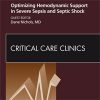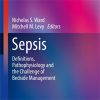Positive End-expiratory Pressure and Mechanical Power
anesthesiology.pubs.asahq.org
Less than 7 cm H2O positive end-expiratory pressure reduced atelectrauma encountered at zero end-expiratory pressure. Above a defined power threshold, sustained positive end-expiratory pressure contributed to potentially lethal lung damage and hemodynamic impairment. Lung mechanical power was similar at 0 (8.8 ± 3.8 J/min), 4 (8.9 ± 4.4 J/min), and 7 (9.6 ± 4.3 J/min) cm H2O positive end-expiratory pressure, and it linearly increased thereafter from 15.5 ± 3.6 J/min (positive end-expiratory pressure, 11 cm H2O) to 18.7 ± 6 J/min (positive end-expiratory pressure, 14 cm H2O) and 22 ± 6.1 J/min (positive end-expiratory pressure, 18 cm H2O). Thirty-six healthy piglets (23.3 ± 2.3 kg) were ventilated prone for 50 h at 30 breaths/min and with a tidal volume equal to functional residual capacity.















